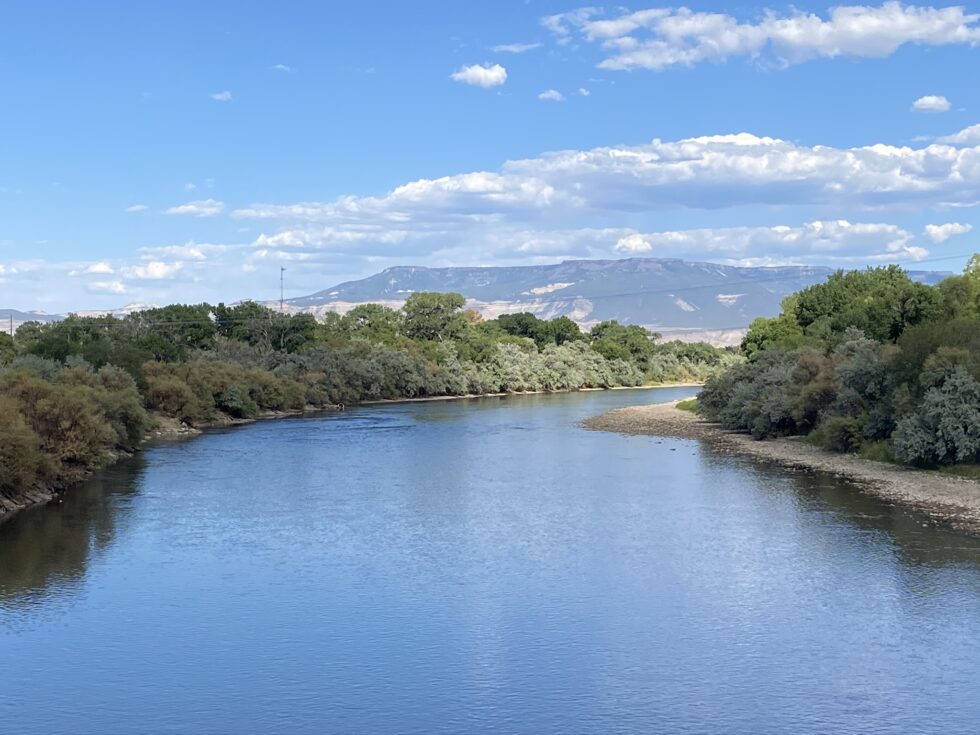The Colorado River is in a climate-induced crisis. The worst drought in 500 years may force the federal government to intervene on how seven states in the Western United States share the river’s shrinking annual allocation of water, highlighting how water has emerged as a critical economic, environmental, and social issue for consumers, farmers, companies. New technologies like blockchain, satellite telemetry, and advanced sensors could become an important part of the search for solutions on how to better manage this precious resource in the face of severe, ongoing drought around the world.
Last summer, as one-third of all land in the Western United States was classified by the U.S. Department of Agriculture as being in extreme or exceptional drought, the State of Colorado issued “Emerging Technologies to Improve Water Resource Management in Colorado.”
Authored by several not-for-profits, research institutions, and universities, including the Colorado Water Trust and the Climate Innovation Collaboratory, an alliance between Deloitte and University of Colorado Boulder, the report looks at how digital technology tools can be deployed to significantly enhance the monitoring, conservation, and distribution of major water sources like the Colorado River and improve water resource management in the Western U.S.
For instance, “real-time monitoring devices used in conjunction with a digital ledger platform like blockchain can help Colorado River users and stakeholders address many of their water allocation challenges,” says Deloitte Consulting LLP managing director Rana Sen, who co-authored a chapter of the report, on what it would take to digitize Colorado River water rights transactions with S.J. Maxted and Carley Weted, also from Deloitte Consulting LLP. Creating digital water management platforms can improve the transparency and efficiency of water rights transactions, enabling more effective management of a water system.
The Need for Advanced Sensors
Digital water management platforms have been envisioned for years but have needed advancements in underlying technologies to make them viable. Key among these has been water sensing technology, especially advancements in the continuous monitoring needed to track water consumption and trading in real-time. “Technological innovation in monitoring and data collection will be paramount: more affordable, valid, precise measurements that provide granular data will form the base of any digital water system,” Weted and co-authors write in the Emerging Technologies report. To meet these demands, newer sensors are applying an Internet of Things (IoT) approach to design “systems of systems” that collect and send large quantities of data to centralized databanks, even in remote environments.
To understand how advances in sensor technology can contribute to digital water management platforms, the Climate Innovation Collaboratory is piloting a project that monitors groundwater using IoT sensors and applies advanced machine-learned capabilities to extract trends from sensor data. The results can help water stakeholders better understand stressors on the water system and make more informed choices about how water is used and managed. Ultimately, the project seeks to connect water conservation to a broader environmental resource market, potentially by issuing environmental credits for water conservation. Environmental credits could provide behavioral incentives for water users and create sustainable financing for water-related projects.
“New sensor technologies can help improve trust among water users and create incentives, including commodities, that allow us to conserve, trade and protect water,” says Evan Thomas, Professor of Environmental Engineering at the University of Colorado Boulder, and lead editor of the report.
Gaining Buy-In
Combined with improvements in satellite telemetry and digital ledgers, advances in water sensing technology now provides the right data to power digital water management platforms. Throughout the world, water users are initiating the development of such platforms, sometimes called digital “water markets,” to monitor, maintain, and protect their water supply.
In the state of Washington, the Kitittas Reclamation District and their partner Trout Unlimited are looking to implement a water rights smart market as part of the Yakima Basin Integrated Plan to protect its 6,200 square mile watershed. “Digitally enabled market technologies improve insight into resource consumption and can incentivize appropriate water use and management,” says Maxted. “They bring water users together and offer transparency for managing an entire system.”
To be successful, a digital platform to manage and account for water transactions should integrate input from and work closely with regional water users – including rural water users’ associations, water districts, traditional water rightsholders, and individual farmers – to garner support and tailor the platform to user needs. The value-add of such solutions should be easy to see: lower transaction costs, economic benefits to individuals and communities, and less time and resources spent obtaining water . They should offer transparency for the water system’s management while maintaining security and privacy for individual users, particularly independent farmers.
More than 40 million people access water from the Colorado River, creating what may be the largest stakeholder buy-in challenge yet for digital water management platforms (although it would mainly require buy-in from farmers, utilities, and basins, a much smaller number). Despite the scale, the pathways for creating a digital water management platform and its benefits remain the same: apply innovations in digital water technologies to create a holistic view of the water system and its resources, more easily accessed and understood by all. Digital water management platforms can offer a level of transparency unprecedented in historic water allocation efforts, revealing to users the shared impact of their water resource use in a new way.
The use of these platforms, observes Sen, “can transform water management in the West and across the United States.”
Learn more: Read the Report
